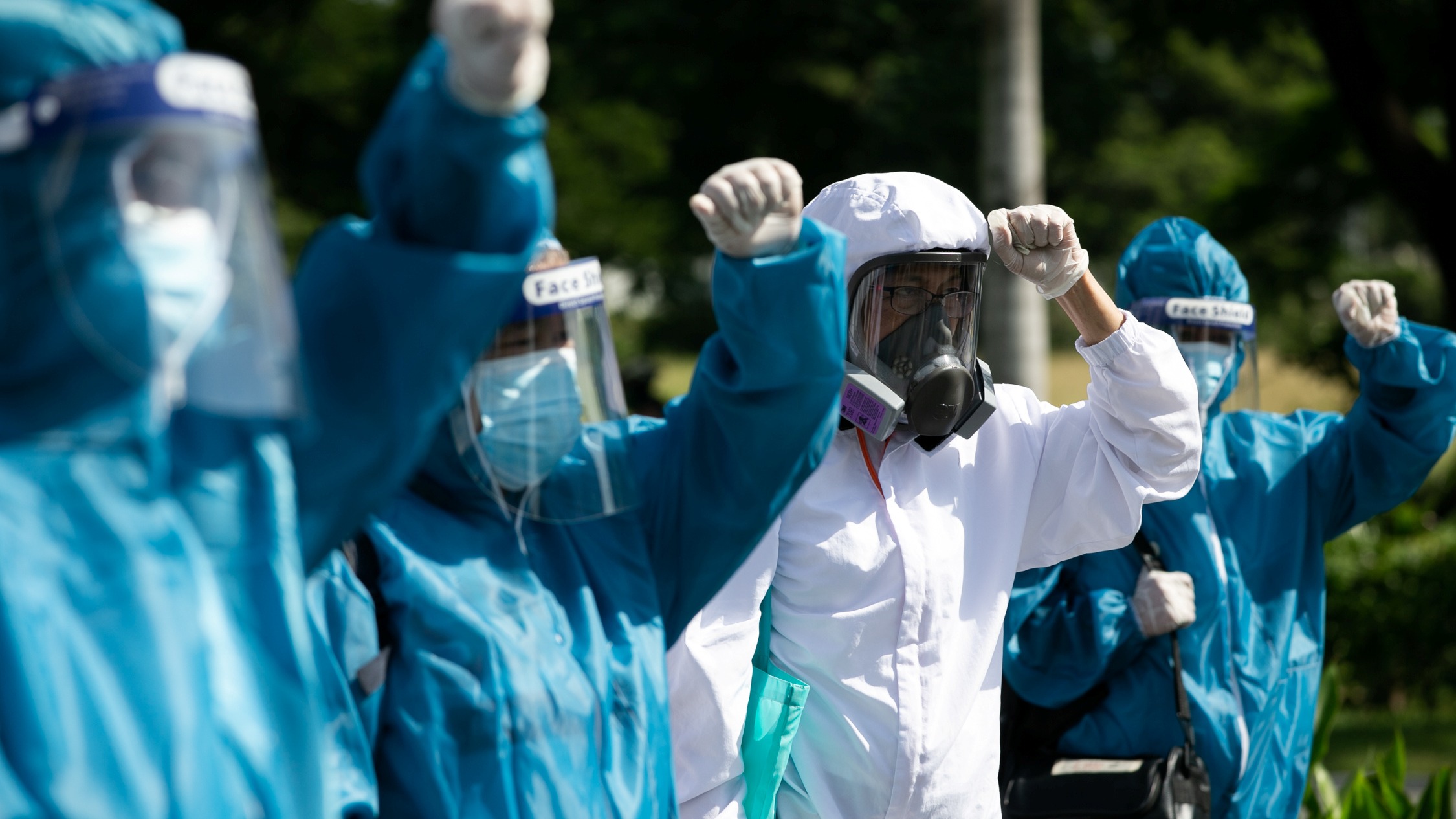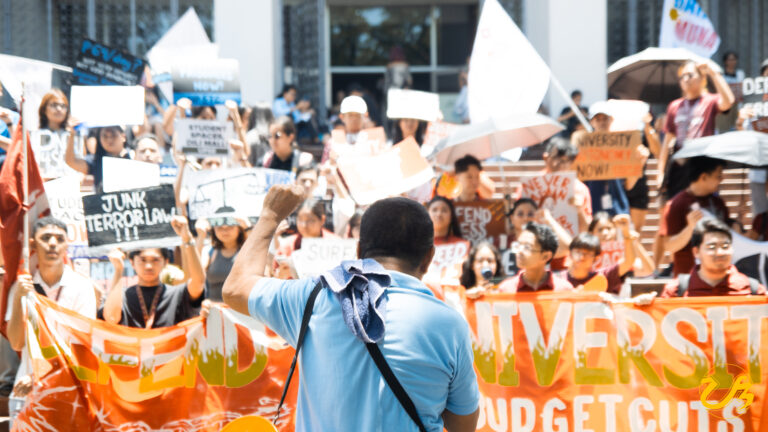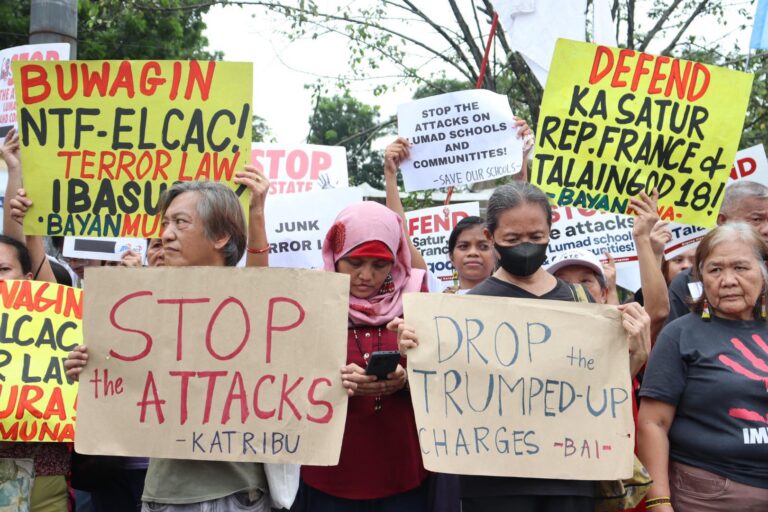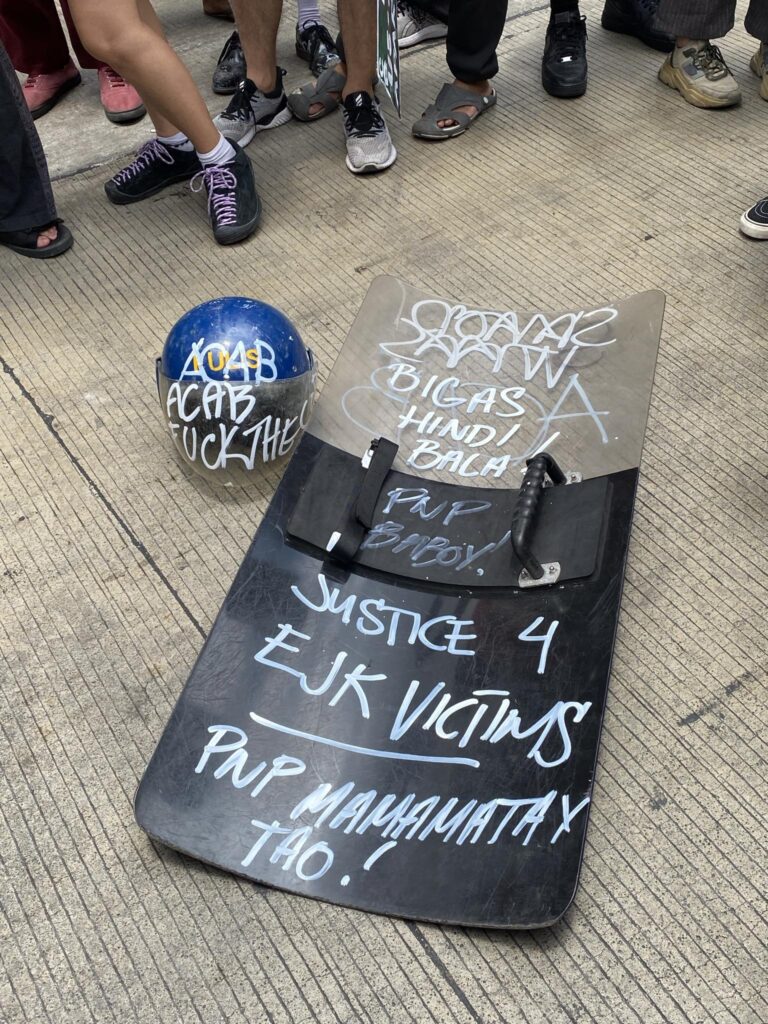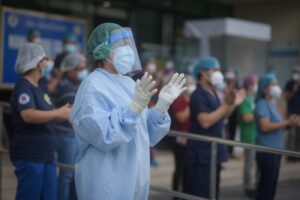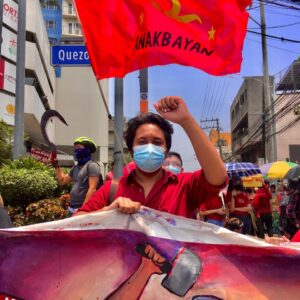
“If President Duterte truly recognizes us as heroes, beyond recognition over our heroic efforts, we appeal that he must address our concerns and demands.”
Salome Ejes, Vice President of the Philippine Heart Center Employees Association chapter of the Alliance of Health Workers (AHW), echoed what the country’s health workers have been clamoring for from the Duterte administration. As front liners continue risking their lives in the name of service, the government must provide substantial benefits, support, and protection for the Filipinos’ “modern-day heroes.”
Unfortunately, the Duterte administration has completely failed to fulfill its duty, more than a year after the pandemic hit. And it just could not seem to get over the hump.
Even before the COVID-19 pandemic hit, the Philippines’ health care system has already been struggling. For instance, the World Health Organization (WHO) recommends that there should be 20 hospital beds available for every 100,000 population. The Philippines is still far from reaching this optimum number. According to data from the Philippine Statistics Authority (PSA), there were only 9.9 beds per population in the country in 2014, and only 47% of barangays have health care stations in 2018.
Aside from critical public health infrastructure, the health care system is also lacking in human resources. The WHO recommends having ten doctors and 20 nurses for every 10,000 population. According to the 2018 Philippine Health Review, there were only 3.9 doctors and 8.6 nurses per population — another far cry from WHO-recommended ratios.
The pandemic has further exposed and exacerbated existing structural gaps and deficiencies plaguing the Philippine health care system. Along with the Duterte administration’s misplaced priorities and continued neglect, what formed was a perfect storm that left Filipinos unprepared to face a massive health crisis.
In August 2020, photos, videos, and testimonies from exhausted health workers flooded social media in a wave of desperation that swept the country as COVID cases continued to rise. The WHO would not grant an emergency use authorization to a vaccine until four months later. Meanwhile, hospitals are running out of beds, oxygen tanks, personal protective equipment (PPE), and manpower. The situation was dire, and Reuters described the Philippines’ fight against COVID-19 as a “losing battle.”
Amid a throng of negative developments, the death of Cainta nurse Maria Theresa Cruz due to COVID-19 grabbed headlines because of the measly hazard pay her family received. The Department of Health (DOH) promised hazard pay rate is P500 multiplied by the number of risky days worked. Joie, Theresa’s daughter, expected to receive P30,000 for her mother’s efforts. What she got was P7,625.
Disappointment and outrage towards the government characterized the issue. Although Malacañang said that Theresa’s hazard pay was “unacceptable,” it was later understood that President Duterte’s own Administrative Order (AO) No. 26 was to blame for the measly amount her daughter received. Although section 1 of the AO stipulates that the hazard pay of government personnel will be P500 multiplied by the number of days worked, section 3 allows agencies with insufficient funds to have “a lower but uniform rate granted for all qualified personnel.”
“It’s a big problem because the government didn’t allocate a budget for these benefits, so the alibi of hospital directors is they can’t give the full amount because their budget is insufficient,” said Mendoza.
However, the plight of Filipino health workers is not limited to inadequate and delayed benefits for their invaluable service. The low prioritization of health care, funding of unnecessary and harmful projects and agencies, and rampant corruption within government, among others, have contributed to the difficulties front liners face in the fight against COVID-19.
In May 2021, Senator Risa Hontiveros, who discovered that the government overspent on P1 billion worth of foreign-made PPEs, pressed Health Secretary Francisco Duque III to address the delay in the benefits for health workers and their worsening work conditions.
“In-extend na ang P13.5 billion sa ilalim ng Bayanihan 2 para matugunan ang mga pangangailangan ng mga health workers, pero hanggang ngayon, hindi pa rin naipapaliwanag ng Health Secretary kung bakit walang maayos na roll-out sa mga ospital,” Hontiveros pointed out.
Meanwhile, the Duterte administration is experiencing no delays in funding the controversial and unconstitutional National Task Force to End Local Communist Armed Conflict (NTF-ELCAC), heavily condemned for endangering the lives of Filipinos, including health workers. The AHW has long decried the Duterte administration’s attacks and red-tagging against front liners, critics, and activists who are merely urging the government to do better.
“We call on the President and his government to end its attacks on human rights and urgently focus efforts on mitigating the devastating effects of the COVID-19 pandemic. Anything less is yet another failure of governance,” said Emerlynne Gil, Amnesty International’s Deputy Regional Director.
Given the Duterte administration’s lack of urgency and refusal to let health experts lead its response to the pandemic, it is not surprising that health workers have resorted to various forms of protest. Last April 9, as the Philippines celebrated the Day of Valor, health workers held signs demanding the immediate release of their Special Risk Allowance (SRA), meals, transportation, and accommodation allowance, and other long-overdue benefits from 2018-2020.
“Many of our colleagues died in the fight against COVID-19 without even getting those benefits. Those benefits are already funded and besides, it’s just a small thing compared to the sacrifices of health workers to address and fight this pandemic. This government is numb and heartless when it comes to our safety, protection, and welfare,” said Benjamin Santos, AHW Secretary General.
Last July 16, health workers also threw tomatoes at the DOH logo as the government is yet to release the benefits that the Duterte administration has promised.
“The two meetings we had with the [Department of Health] were unfruitful. No substantial gains were achieved to the pertinent issues we raised. DOH pointed out problems with the Department of Budget and Management and thus our concerns were not really addressed,” said Ernesto Bulanadi, President of Tondo Medical Center Employees Association-AHW.
The problems health workers faced even before the pandemic began persist today. If the Duterte administration continues to neglect the vital health sector amid the pandemic, the worst may be yet to come for the country.
“The modern-day heroes can no longer combat and fight the pandemic because they are already depleted,” ends Ejes.
Health workers dying, unprotected, poor, and condemned to death as the incompetent dictator in Malacañang sits pretty, is nothing but a gross picture of the harsh realities of four decades of neoliberal healthcare built on privatized facilities, market-based rather than publoc access, and the complete commercialization of what should have been a public right of everyone.
With such a social disease taking more toll each day, we need more heroic acts as a nation to defy the limits of a moribund system.
Featured Image courtesy of Nikkei Asia.


